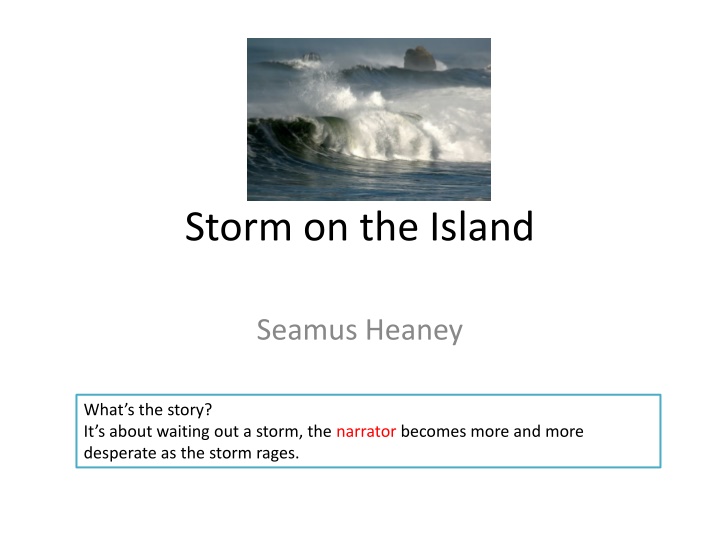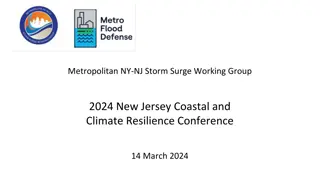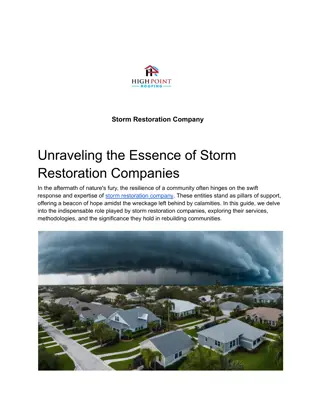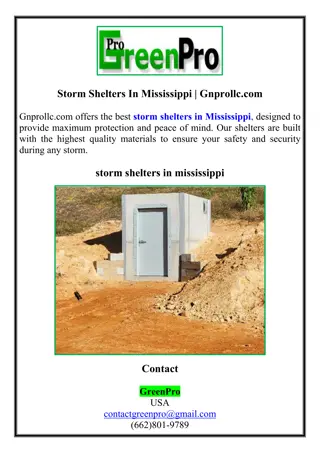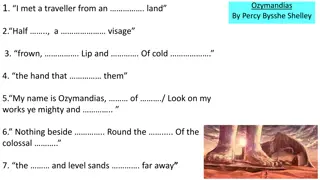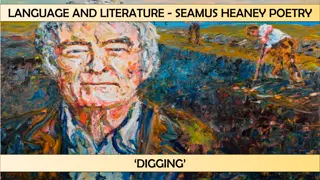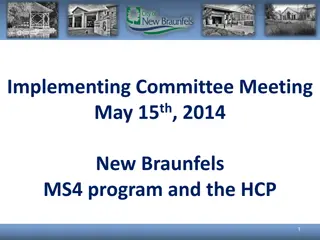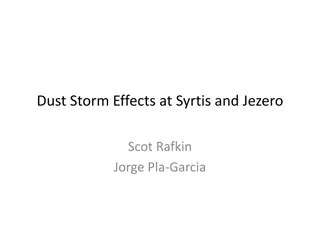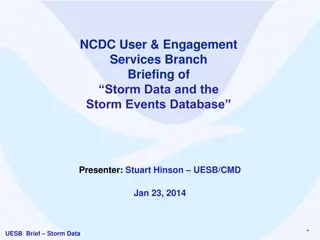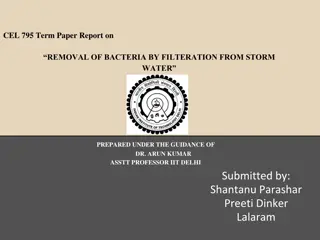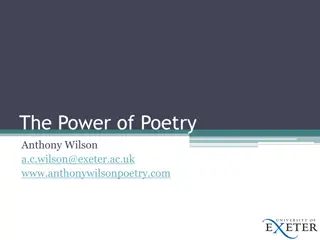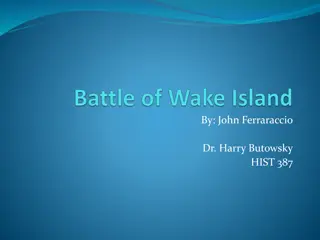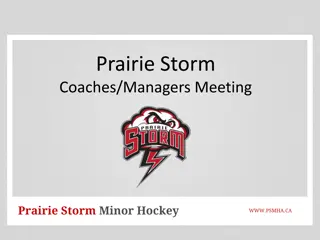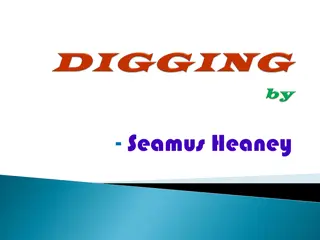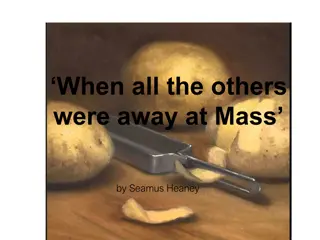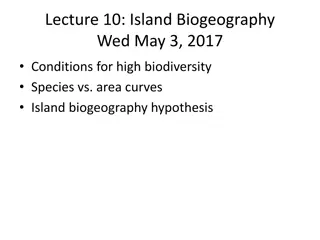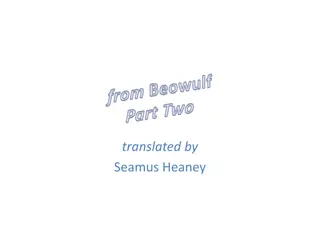Analysis of "Storm on the Island" by Seamus Heaney
"Storm on the Island" by Seamus Heaney is a poem about waiting out a storm on a remote island. The narrator describes the fear and desperation felt as nature rages outside their sturdy home. Heaney's use of language devices, structure, and form effectively convey the power and uncontrollable force of the storm, highlighting the confrontation between human vulnerability and nature's might.
Download Presentation

Please find below an Image/Link to download the presentation.
The content on the website is provided AS IS for your information and personal use only. It may not be sold, licensed, or shared on other websites without obtaining consent from the author.If you encounter any issues during the download, it is possible that the publisher has removed the file from their server.
You are allowed to download the files provided on this website for personal or commercial use, subject to the condition that they are used lawfully. All files are the property of their respective owners.
The content on the website is provided AS IS for your information and personal use only. It may not be sold, licensed, or shared on other websites without obtaining consent from the author.
E N D
Presentation Transcript
Storm on the Island Seamus Heaney What s the story? It s about waiting out a storm, the narrator becomes more and more desperate as the storm rages.
Relevant Context Born in 1939. Died in 2013. Northern Irish poet and translator. This is an early poem. He focussed on rural life and identity and Irish ancestry. This poem was published in Death of a Naturalist . 3 poems published in 1964 in The New Statesman (including this one). He was then signed with Faber and Faber publishers. So this poem kick-started his career. This poem was written about the Arran Islands (off coast of Ireland). Explores the power of nature.
Literal translation Speaker tells us that we are ready and we build our houses to withstand powerful storms. They have strong foundations. Where we live, the earth is so dried up and shrivelled we cannot grow crops so there s no threat of losing hay and corn in a storm. There are no trees to keep us company as the wind blasts their branches. So we can t listen to what we are afraid of. There s no shelter. You might imagine that the sea would keep us company, but no. When the storm begins, the waves smash against the window and are something vicious, not comforting. We wait patiently indoors whilst the storm rages outside. The wind is invisible.
Language Read through and highlight language devices used. Pick one of the words/phrases and explode your analysis: Squat, wizened, tragic chorus, you know what I mean , pummels, exploding, flung, spits like a tame cat , savage, dives, strafes, salvo, bombarded, strange, fear. E.g: squat: literal meaning/implied meaning?
Structure and Form 5+ Structure reflects uncontrollable power of nature (compares well with The Prelude) 1 long stanza, made up of long and complex sentences. Can barely stop for breath reflecting overwhelming situation. Non-stop barrage, no time to stop and think. The poem contains enjambment (one sentences spans 6 lines! Can you find it?) emphasises constant barrage of the storm on the house. Confusing points: everyday language you know what I mean . This is everyday life to the narrator. Oxymoron: exploding comfortably (the narrator has made sense of his world) Rhyme scheme: little rhyme, lack of control Half rhyme in opening and closing couplets. Stressed syllables of end consonants rhyme but vowels don t. Squat and slate . air and fear . Ties in with the wild storm that refuses to be controlled therefore full rhyme is too perfect. The rhyme is used at the start and end to reflect the cyclical structure: the storm will occur again and again. Dramatic monologue? A link to his historical past? Typical of early Heaney: rural life and identity through a historical view of ancestry. Single person talking to someone else. Speaker is not the poet and the listener is silent. The poem fits these conventions. Not as long as usual MLD and no gradual reveal of a dark element as in My Last Duchess. But why has the poet used this form? Maybe it reflects the imbalance between the speaker and nature. Nature is stronger and doesn t care. Blank verse: iambic pentameter (no rhyme) da da, da da, da da, da da, da da. Why? Heaney wanted to find a way to show a central tradition of English poetry. Therefore used very cleverly as combined with Irish ancestry and setting. Mix of English and Irish everyday language you know what I mean . Cultures juxtaposed.
Two different interpretations 5+ Power Conflict Power of nature Metaphor for conflict in Northern Ireland Literal meaning: storm Title STORMONT NI parliament buildings Language and phrases: we reflects solidarity between Irish Catholics. Language of warfare used throughout: blast/explosion/strafes to repeatedly attack with bombs and gunfire/salvo simultaneous attack with bombs/gunfire. Storm is a metaphor for violent political turmoil
The Troubles in Ireland Late 12th century Britain invaded and took over Ireland. Irish weren t happy and there was a series of uprising. 16th Century huge amounts of land were taken over by the British and the culture was affected. The Irish rose up and threw the British out of 3 provinces In 1922 Southern Island became a separate country to UK and Northern Ireland remained part of Britain. Catholics wanted to leave the UK. Protestants wanted to be British. Therefore huge tension Heaney born in 1939, he was Catholic and faced persecution. Voting system was unfair 1998 Good Friday Agreement end of the troubles but still Sectarian resistance.
The Troubles Explained https://www.youtube.com/watch?v=1kR11vn 41XU
Comparisons Which poem(s) do you think this compares well with? Why? Language? Themes? Structure and form?
